'Accessible in every single way': Experts highlight hidden cost of alcoholism in America
Substance use disorder (SUD) is a rapidly growing issue in America, and the costs of treatment is highest for alcohol-related abuse across America.
According to a recent study from the Journal of the American Medical Association (JAMA), substance use disorder costs hospital systems upwards of $13 billion a year. The estimated costs for each substance group ranged from $4 million for inhalant-related disorders to $7.6 billion for alcohol-related disorders.
“It’s not surprising because alcohol is the most accessible of all the substances,” Dr. Nora Volkow, the director of the National Institute on Drug Abuse (NIDA), told Yahoo Finance. “I can go one block from my house and when everything was closed, the liquor store was open in my neighborhood. It’s accessible in every single way. We’ve made alcohol drinking part of our social interaction, part of our everyday routine. We may drink a glass of wine with dinner. So that’s not surprising at all.”

The only federal restriction as it relates to alcohol is that the minimum drinking age is 21. Aside from that, the power is left up to the states to decide which regulations to implement.
“One of the things that you want to do is actually prevent consumption of drugs in classes that aren’t harmful,” Volkow said. “You have alcohol, and you want to educate people about what are the harmful effects of alcohol. How do they emerge? The same thing, actually, is what some of the states are trying to do in different ways with marijuana. To the extent that you are able to communicate and educate the public about what patterns are harmful may minimize the risk associated with their consumption.”
Without proper education, she added, increased prevalence in society often leads to increased consumption and the risks associated with substance abuse.
“Any drug that’s legal is going to result in much greater damage in terms of the populations than illicit substances," she said. "Not because they’re more dangerous, but because of their wide access and consumption.”
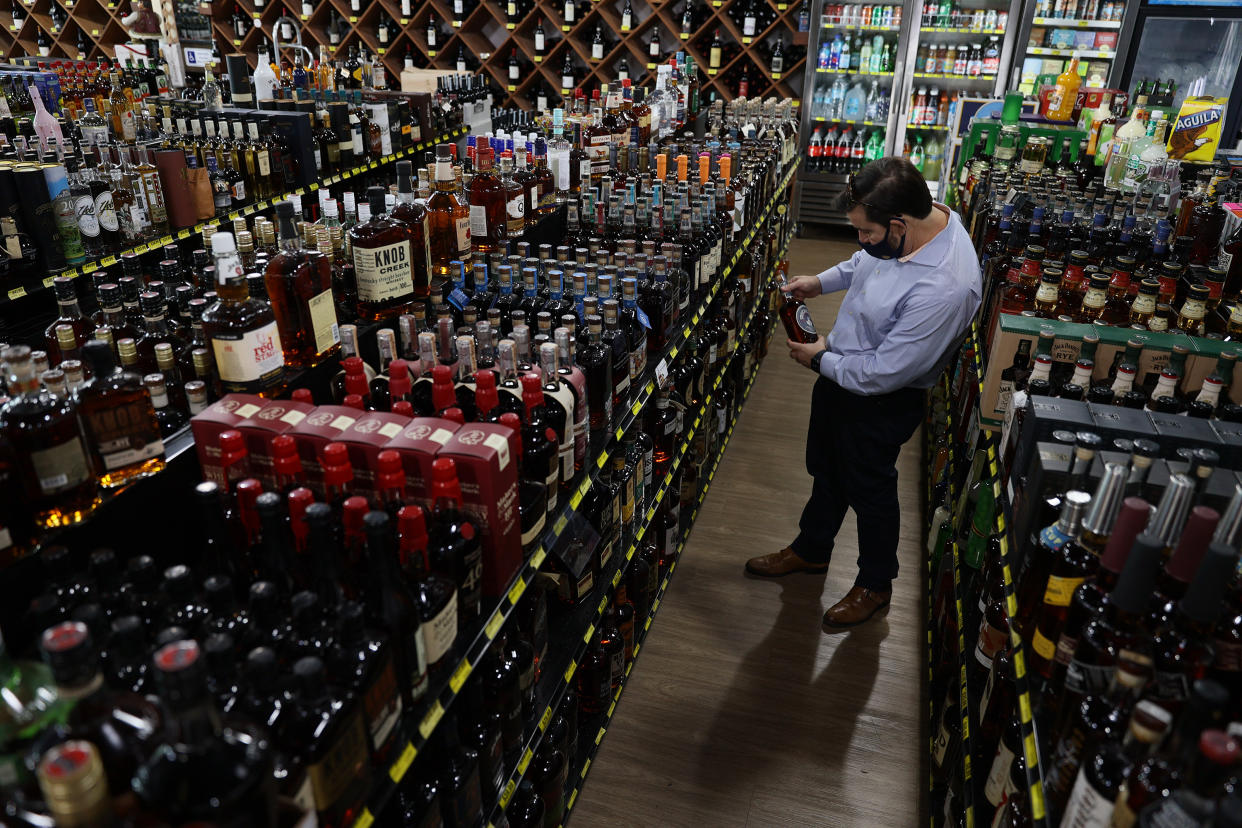
One study from the National Institute on Alcohol Abuse and Alcoholism found that from 1999 through 2017, per capita consumption of alcohol increased by 8% and “the number of alcohol-related deaths doubled, many caused by liver disease,” according to the New York Times.
Vokov noted that cigarette smoking was once extremely prevalent from the 1950s into the ’80s, and then public service campaigns began to highlight the dangerous effects of smoking.
By 2018, use among adults reached an all-time low at just 13.7%.
“They started educating the public about the harmful effects of cigarette smoking, and their consumption went dramatically down,” Volkow said. “That has been a very successful overall campaign of prevention. That has not happened for alcohol. The prevention campaigns for alcohol have not been nearly as effective as those that were for tobacco.”
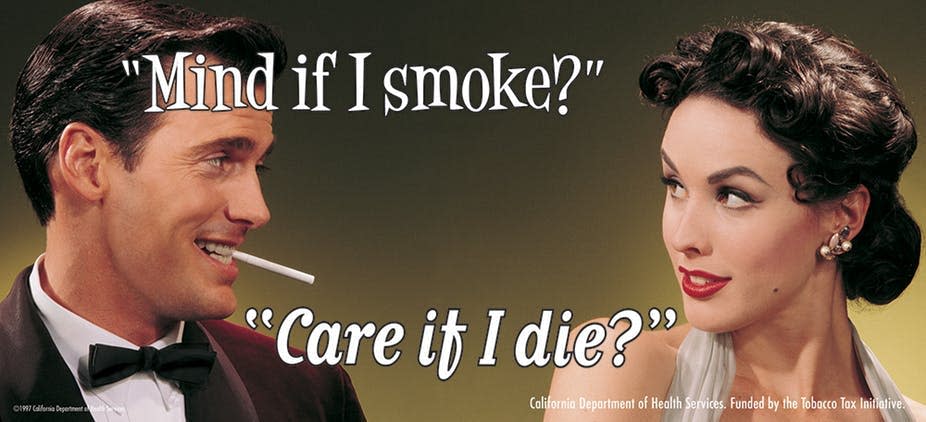
'Each such hospital encounter is costly'
The JAMA study looked at emergency department visits and in-patient admissions, breaking up the categories into “principal” SUD diagnosis, meaning the SUD was the main reason for being there, and “secondary” SUD diagnosis, meaning that it was a concomitant condition along with the main reason for being there.
The findings noted that 2,171,056 people visited an ED in 2017 for a principal SUD encounter, costing an average of $1,985 per visit, and another 3,265,288 people visited for a secondary SUD encounter, costing an average of $740 per visit.
The researchers calculated the cost using a method known as mathematical modeling, in which they factored in hospital encounter costs — controlling for patient demographic, clinical, and insurance characteristics — and compared encounters with and without a secondary SUD diagnosis.
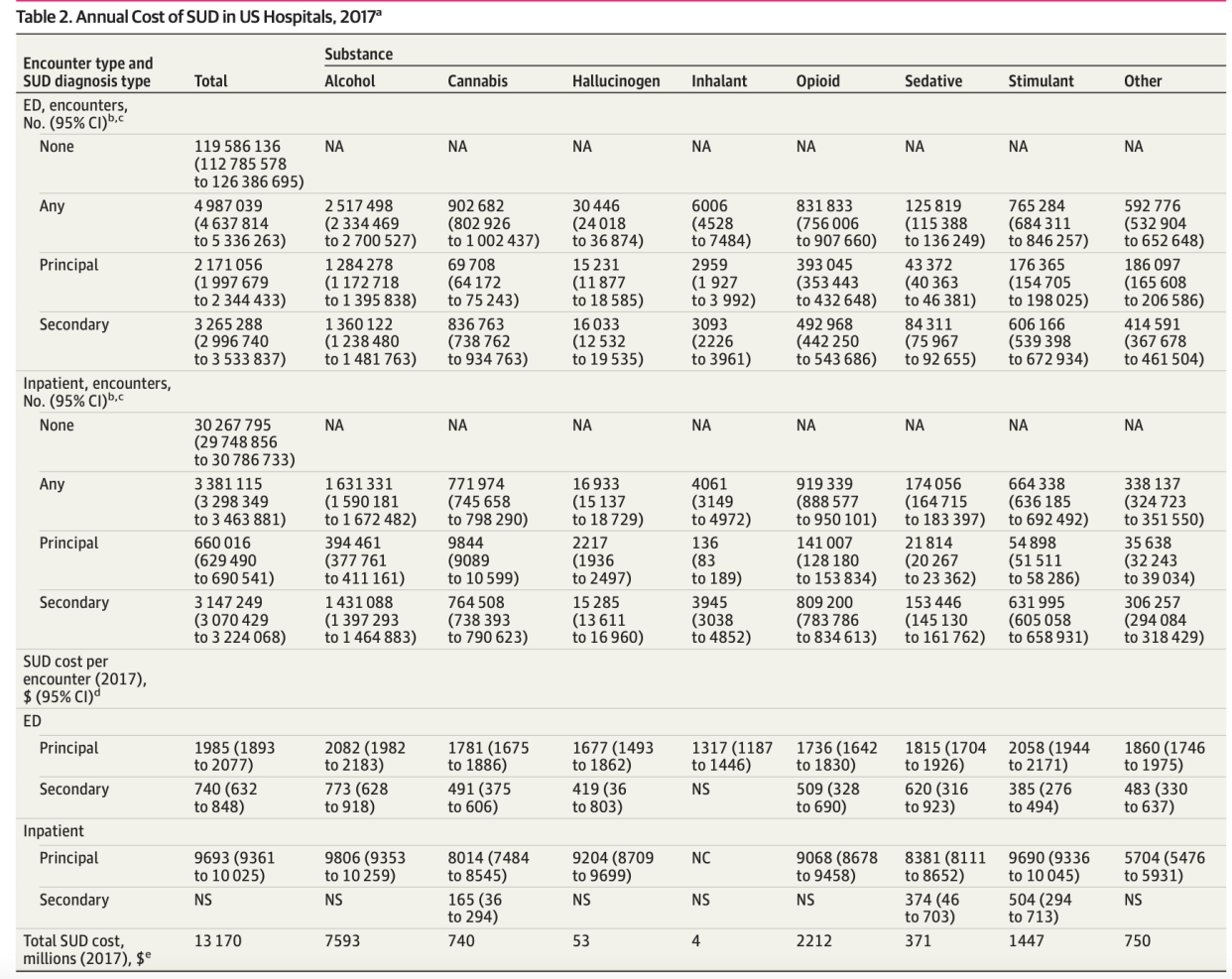
“The $13 billion annual cost is due to the fact that many hospital encounters include a substance use disorder diagnosis and because each such hospital encounter is costly,” Cora Peterson, a senior economist at the CDC’s National Center for Injury Prevention and Control and one of the co-authors of the report, told Yahoo Finance. “This study identified that 4% of all ED visits and 10% of all inpatient admissions — or nearly 5 million ED visits and 3.5 million inpatient admissions — in 2017 included a substance use disorder diagnosis.”
A total of 124,573,175 emergency department (ED) encounters and 33,648,910 hospital in-patient encounters were used based on the 2017 Healthcare Cost and Utilization Project Nationwide Emergency Department Sample and National Inpatient Sample.
The rise in overdose deaths
While alcohol-related disorders incurred the highest costs in the study, other SUDs were present as well.
Opioid-related disorders were the second most costly SUD at $2,212,000 in 2017. During that year, there were an estimated 393,045 ED encounters and 141,007 in-patient encounters with a principal diagnosis along with a likely 492,968 ED encounters and 809,200 in-patient encounters with a secondary diagnosis.
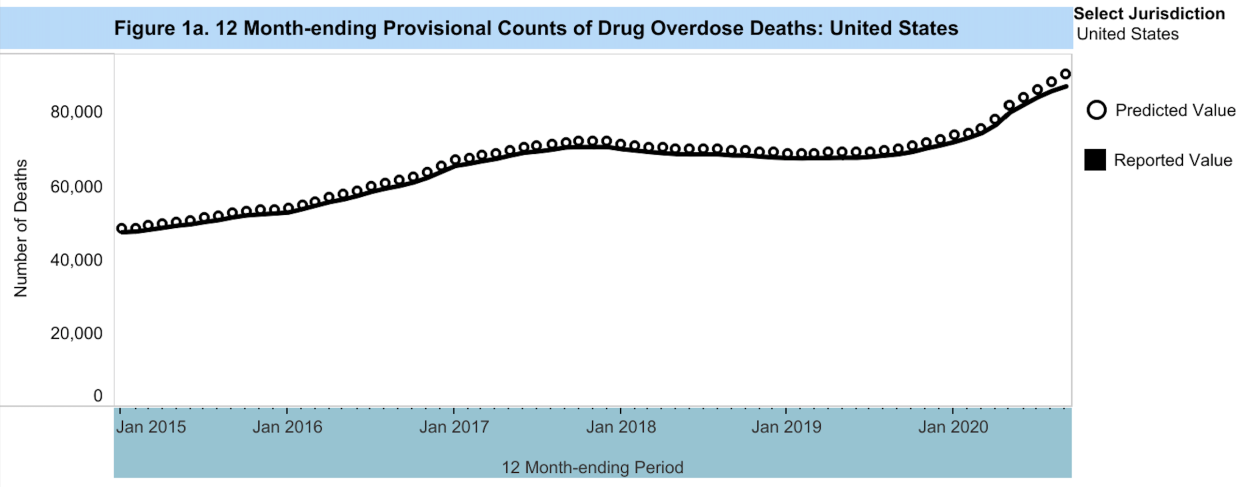
Though the JAMA report focused on data from 2017, additional research has indicated that the pandemic exacerbated the SUD issue in America. For example, a study from the National Institute of Health (NIH) found that exceeding drinking limits and binge drinking increased from February to April 2020, and that average drinking days and drinks per drinking day increased substantially as well.
And according to CDC data, drug overdose deaths are estimated to have increased by 28.8% for the 12-month period ending in September 2020, totaling more than 87,000. An estimated 66,813 of those deaths are attributed to opioids.
Because of the pandemic, Volkow sees this getting only worse and anticipates a potential SUD crisis once COVID is under control in the U.S.
“I’m afraid that there may be some of that happening,” Volkow said. “I’m afraid that once we actually control the COVID pandemic, we’ll be left behind with all of the mental turmoil that the pandemic has entailed for all of us. For example, we know that the situation of social stress is actually a factor that increases the risk of substance use and mental illness, and economic downturns become very problematic.”
“The loss of jobs is extraordinarily stressful,” she continued, “and we know that’s associated with increased risk for drug taking, escalation of drug taking, and also anxiety and depression. Similarly, many people have died and people have lost friends, family, relatives, and those are difficult losses to deal with. The lives of many people have been put on hold.”
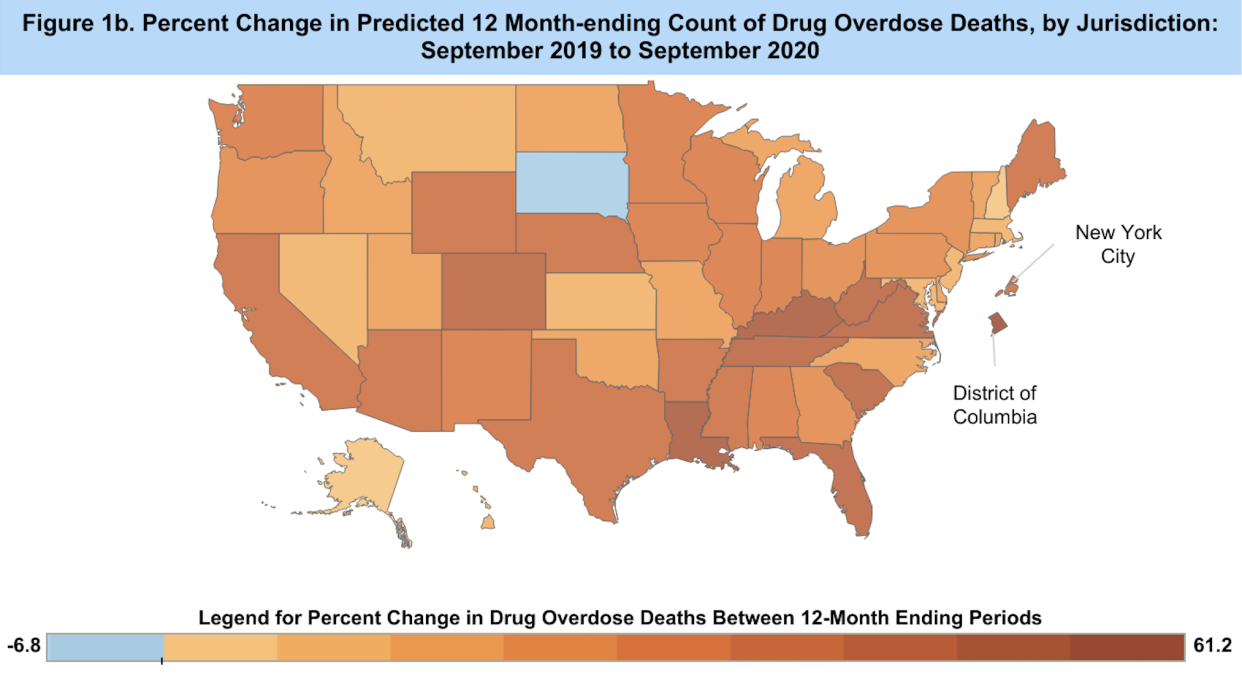
In 2020, more than 40 states reported annual increases in opioid overdose deaths, “as well as ongoing concerns for those with a mental illness or substance use disorder,” according to the American Medical Association.
And a CDC survey from June 2020 found that 40.9% of Americans reported at least one adverse mental or behavioral health condition, with 13.3% of respondents having started or increased substance use to cope with stress or emotions related to COVID-19.
“There are two things — one of them is the social circumstances that we all find embedded in that make it actually very stressful,” Volkow said. “The way that some people cope with it is to take drugs. That’s one element. The vulnerability is higher. And then the other one is the drugs that are accessible. This has been something that we’ve been noticing over the past five years, that more and more the illicit drug market was actually being expanded into synthetic drugs which are much more potent, and therefore much more dangerous. That’s been accelerated during the COVID pandemic.”
Adriana Belmonte is a reporter and editor covering politics and health care policy for Yahoo Finance. You can follow her on Twitter @adrianambellsand reach her at adriana@yahoofinance.com.
READ MORE:
2020 'exacerbated all of the issues' driving record drug abuse in America
About 46 million Americans can't afford quality health care, according to Gallup
2020 was not good for America's mental health, study confirms
Read the latest financial and business news from Yahoo Finance
Follow Yahoo Finance on Twitter, Facebook, Instagram, Flipboard, LinkedIn, YouTube, and reddit.
